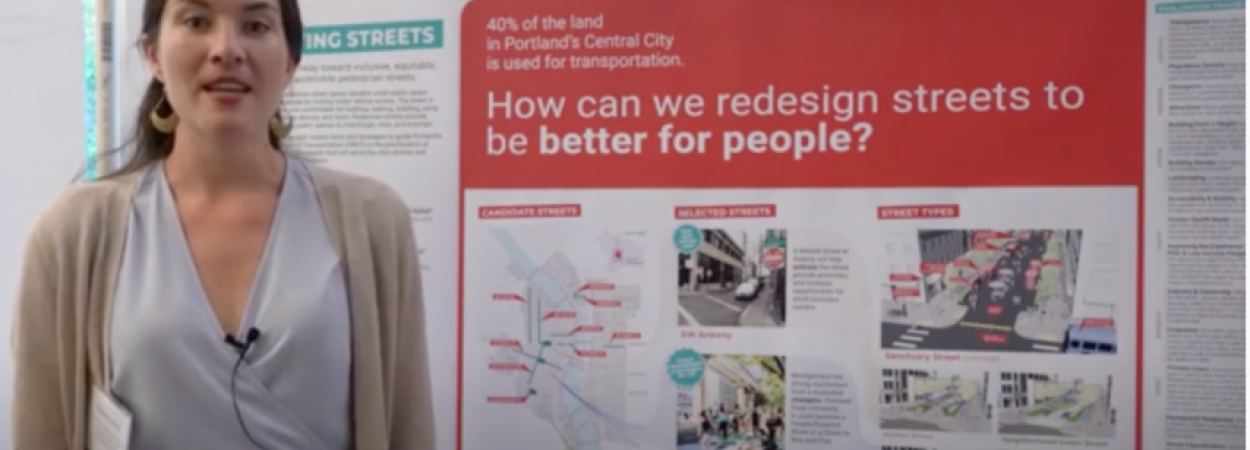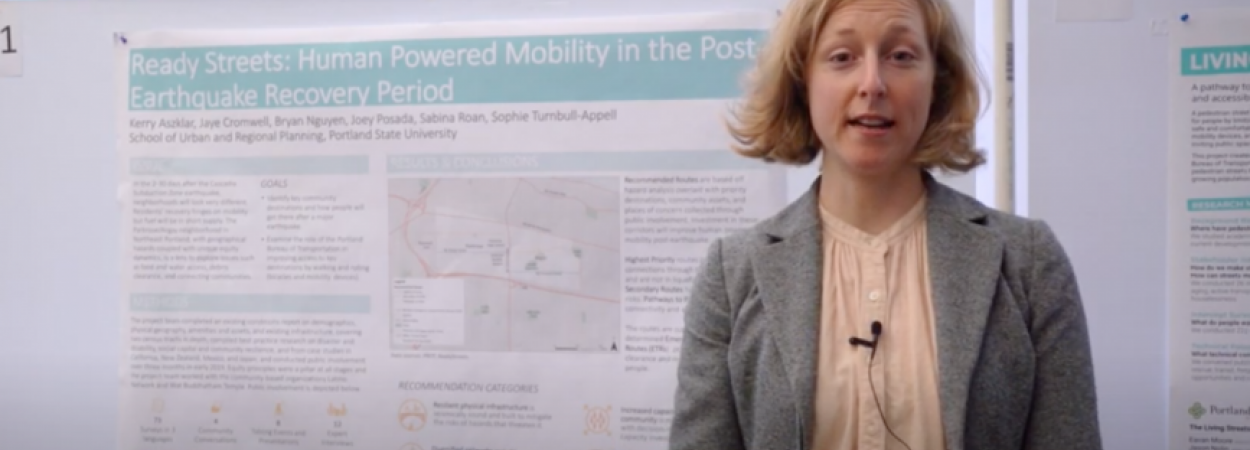 |  |  |

Kate Wihtol is a 2019 graduate of the Master of Urban and Regional Planning (MURP) program at PSU. As of 2020 she is an associate planner at the Oregon Department of Transportation. Kate worked with fellow MURP students of the Living Streets project team to develop a pathway toward inclusive, equitable, and accessible pedestrian streets for the Portland Bureau of Transportation. In this video she talks about their work to identify best practices and recommendations tailored to Portland’s urban context: a city built for cars, but aspiring and progressing toward a more walkable, bikeable, and transit-friendly future.

Photo by cybrain, iStock
NSF SCC RAPID: Consumer Responses to Household Provisioning During COVID-19 Crisis and Recovery
Kelly Clifton, Portland State University; Rebecca Lewis, University of Oregon
This article was authored by Kat…
Read More
Authored by Tammy Lee, Transportation Data Manager, Portland State University
Traditionally, the month of May is Bike to Work Month. Last year this time, Oregon logged 179,177 trips for a total of 1,374,835 miles by 10,397 riders. And last year this time TREC was winning the PSU bike to work month department challenge. So what are we seeing in the data now?
For continuity from the last time we posted some bike volume observations, we’re again showing data from the Hawthorne Bridge and Tilikum Crossing (Figure 1) in Portland, Oregon. At the moment, daily volume across the Hawthorne Bridge remains relatively low. Typically we’d expect bike volumes across th…
Read More
Photo by Nathan McNeil
Nathan McNeil and Jennifer Dill, Portland State University

In the 2-30 days after a major earthquake, neighborhoods might look very different. Walking and rolling are more dependable ways for people to get around because they do not require fuel. This project examined how a resilient neighborhood-level transportation network could help neighborhoods recover after a major disaster. Hear more in this interview with Sabina Roan, a Master of Urban and Regional Planning graduate of PSU.
